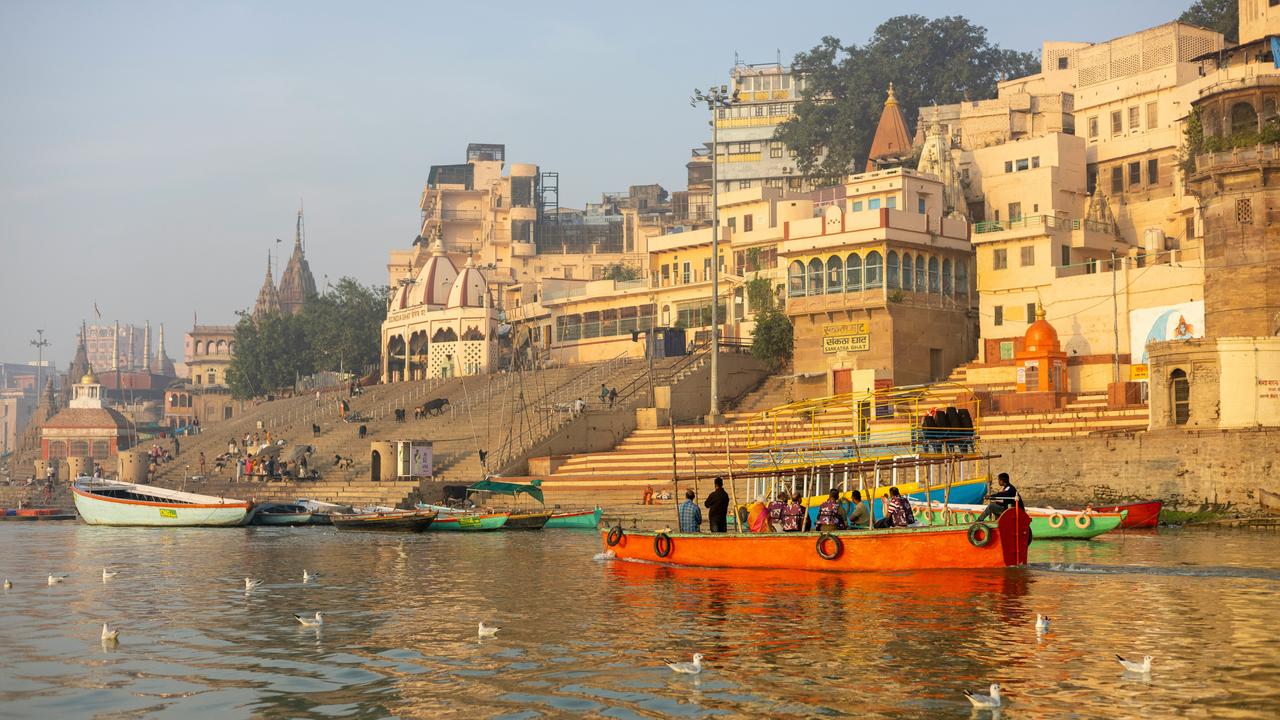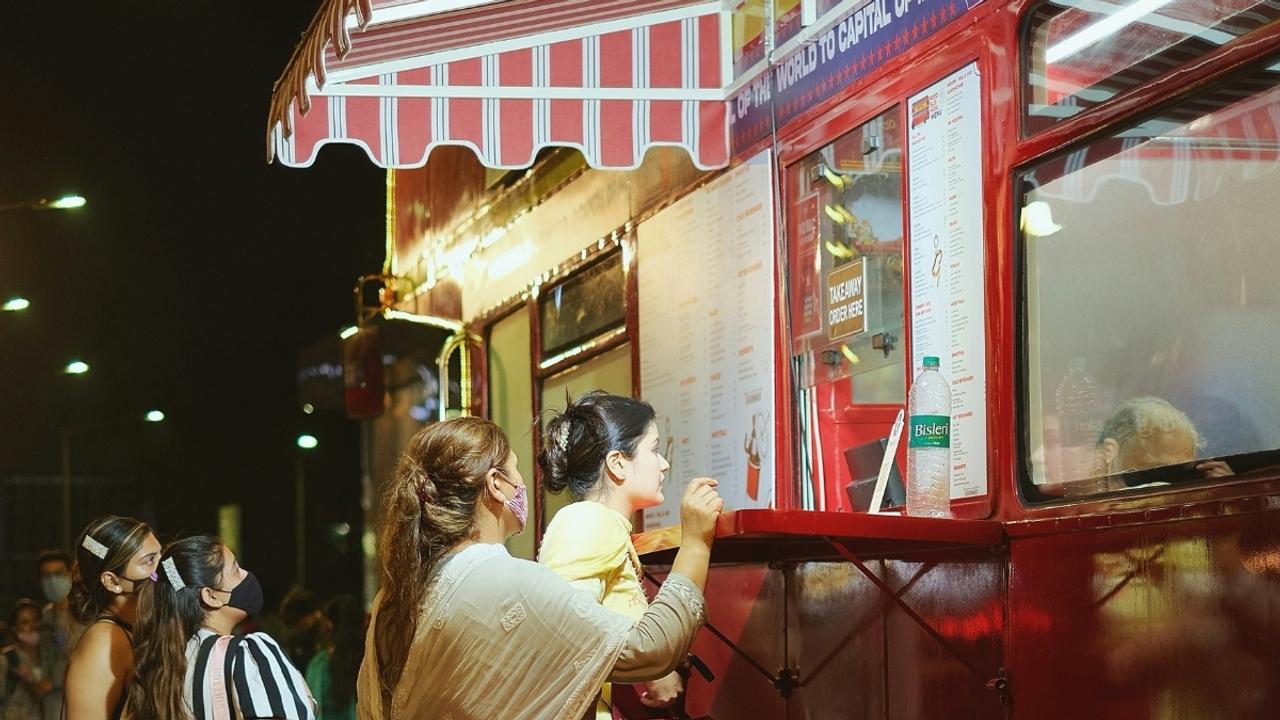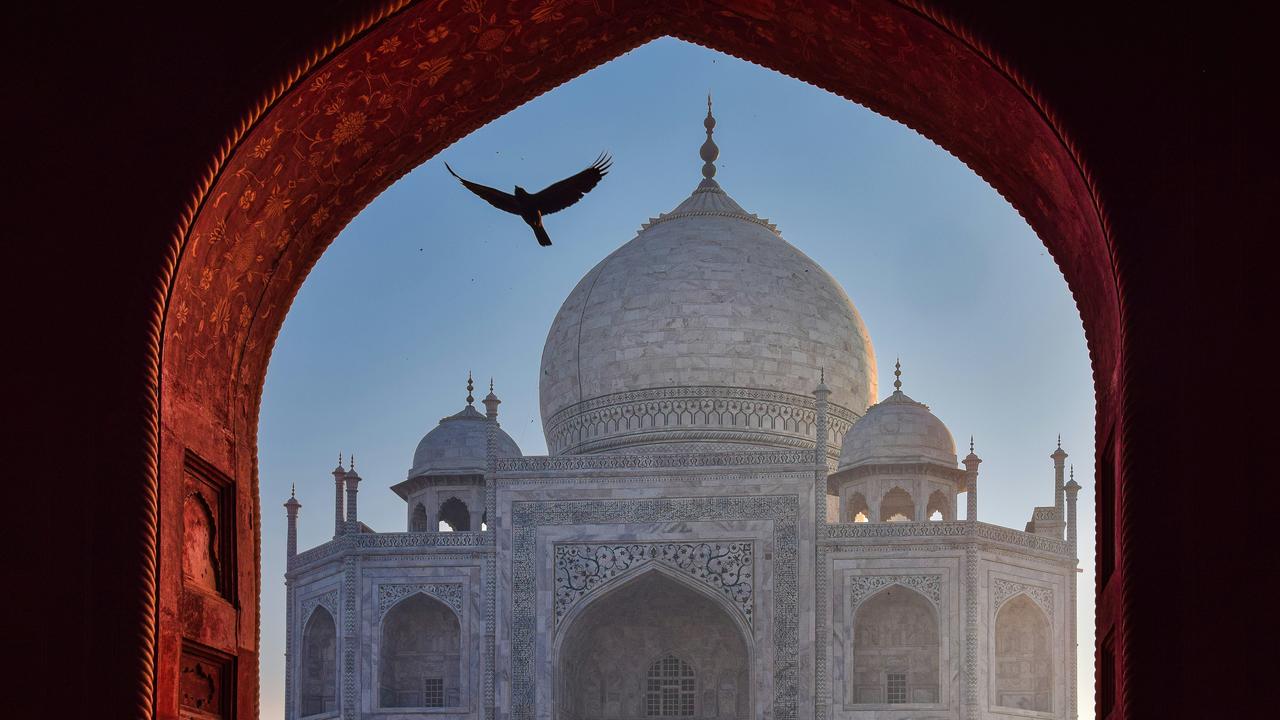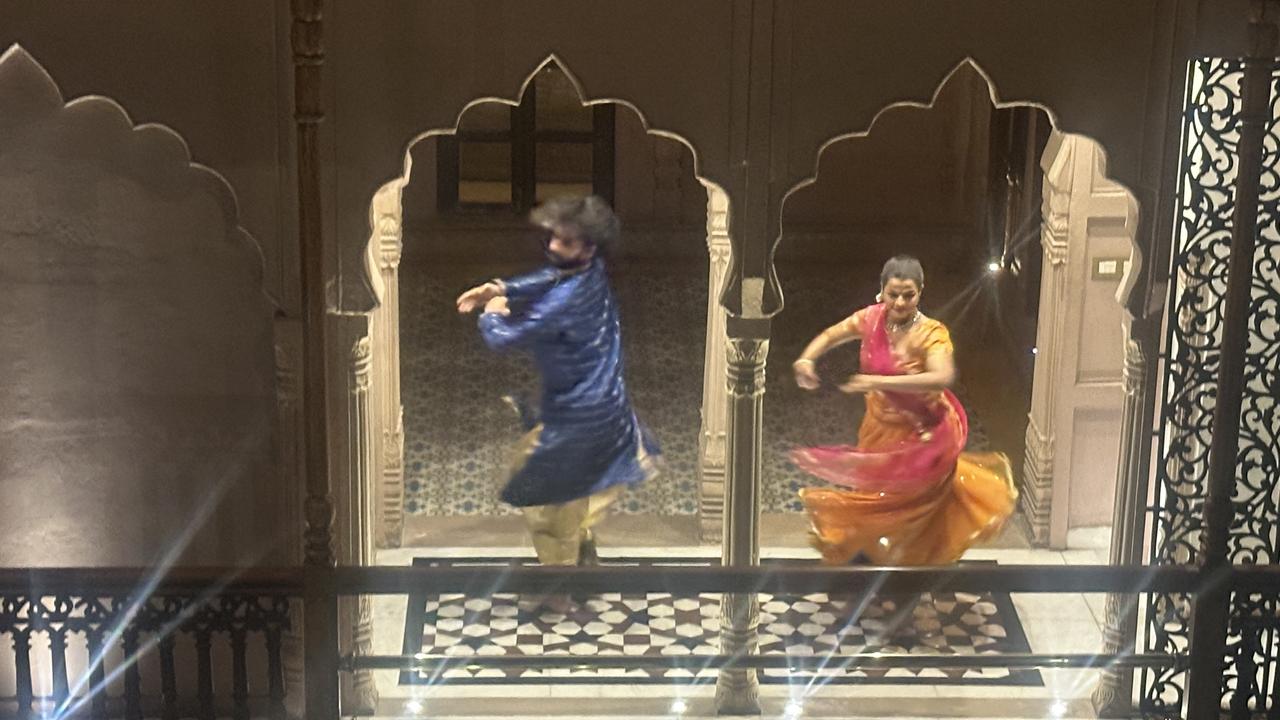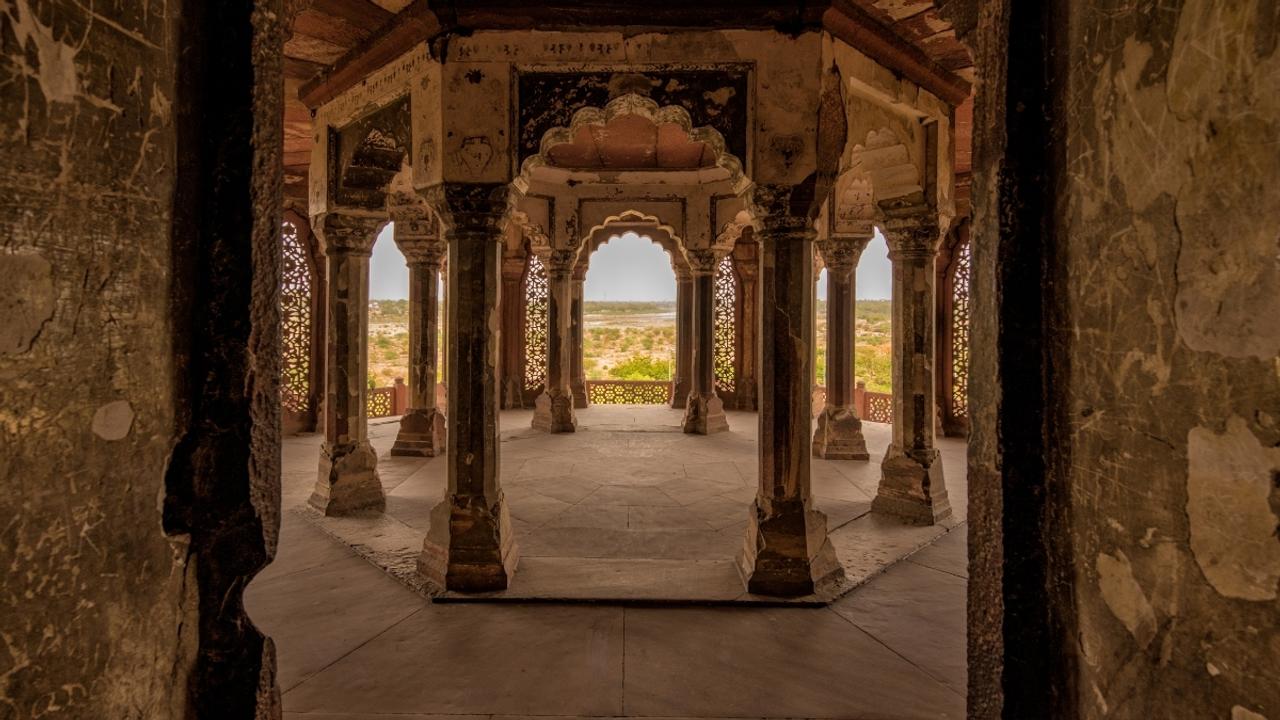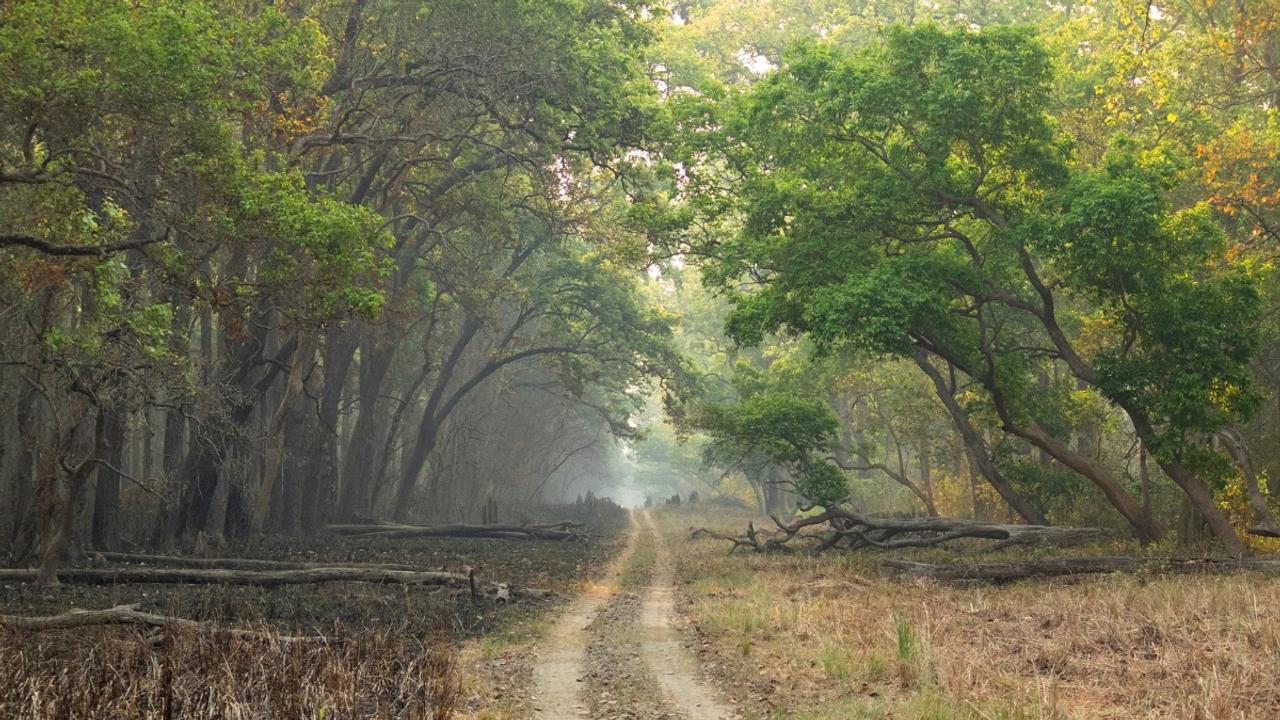A Different Path Through Uttar Pradesh
It’s always tempting to describe India as ‘a feast for the senses’, and it can sometimes tip into overwhelming, but Uttar Pradesh - the so-called heartland of India - delivers beautifully on the promise. An overland journey taking in the sights, sounds, smells, touches and tastes of the region, soaking up every ounce of its heritage, landscape, spirituality and culinary delights, will linger long after you return home.
Start early in Delhi, enjoying a warm cup of chai as the city awakes, and turning your eyes to the historic streets and modern murals. Make a pilgrimage south to a little monument called the Taj Mahal, before heading off piste to an India that’s beyond the usual traveller’s scene. Spend time among the rivers, forests and fresh air of Chambal, follow your nose to the perfumed history and cuisine of Kannauj, and tread close to the Nepali border, keeping your eyes open for glimpses of rare wildlife, at Dudhwa National Park.
Senses revitalised, enjoy more city life in the culture-rich state capital of Lucknow, known for its mouthwatering local delicacies and grandiose buildings. Take in the spiritually poignant Allahabad before heading to Varanasi, the world-renowned centre of devotion on the banks of the Ganges. Immerse every sense you have in Varanasi’s ceremonies and atmosphere as you make your way through narrow streets teeming with people. Humbly watch the smoke of the cremation pyres, listen to the chanting of priests, and savour an array of fragrantly spiced dishes.
Whether it’s your first trip to India or one of many, this less-trodden route from Delhi to Varanasi is a wonderful way to get a taste of India’s familiar history, culture, wildlife and food, alongside exploring elements that show you a different depth to this multi-faceted country.
Old Soul, Fresh Energy
We often make much of the contrasts of Delhi, old and new; the historic maze of tumble-down streets, awe-inspiring architecture, exquisite mosques and markets that make up Shahjahanabad, or Old Delhi, versus the colonial flow and neoclassical nuance of New Delhi. However, there are many other perspectives to be had. Make an early start at first light to see the city at its most tranquil, especially along the banks of the Yamuna river. Enjoy quiet conversations about the city’s spirituality, see athletes training for an ancient sport, join the Delhities for breakfast, and make a morning exploration of the striking Humayun’s tomb.
Wander through the back lanes around New Delhi's station with a guide from the Salaam Balaak Trust, offering insight into their work with children living on the city’s streets. Discover a contemporary slant on Delhi at the Lodhi Colony, an arts district where large murals shed light on social issues relevant to today's India. Explore the city's sparkling high rises, modern malls, markets, restaurants and bars aboard the speedy metro system, and rest your head in restored Havelis and relaxed, locally run guesthouses
Beyond the Taj
The sight of the majestic Taj Mahal is incomparable, and always worth finding a moment in the least-crowded hours to appreciate, but there’s much more to Agra beyond this famous memorial. Take in the region’s wilder side with a journey out of town to the close-by, but little-known, National Chambal Sanctuary. Encompassing a 400km stretch of the River Chambal, flanked by wide ravines of mud cliffs and forest, the sanctuary was established to protect the declining populations of gharial crocodiles and Gangetic river dolphins. The wildlife is small and perfectly formed, rather than ‘big-five’ famous, and in addition to its endangered residents the sanctuary is home to eight species of turtle, smooth-coated otters, butterflies, and an impressive list of birds, including the Indian Skimmer.
Wind your way along the river, accompanied by a knowledgeable naturalist, watching for gharials basking in the sandy shallows and taking in the wider landscapes. Enjoy a warm welcome in rarely-visited local villages, and watch the sun set over riverside temples. Extend your stay at the Mela Kothi Chambal Safari Lodge, which began its life as a mansion in the 1800s and is now an eco-friendly lodge run by the great-grandson of the original owner. Explore trails on foot, by jeep, or by bike taking in the unspoilt rural surrounds.
A Fragrant Feast
Whilst Chambal is little talked of outside of India, Kannauj is almost entirely unknown, and makes for an intriguing, sweet smelling stop en route to Dudhwa National Park. The area has been at the heart of India’s perfume industry for over a thousand years, renowned for its production of attar, a natural oil-based perfume scented with flowers, herbs and spices, which is still made by local producers in traditional copper stills.
Visit the fields where flowers are hand-harvested, watch distillers at their painstaking work, and even create a personalised fragrance to keep, appreciating the delicacy and extraordinary levels of skill involved in this ancient process. The region’s famed appreciation of fragrance extends to the dining table too, with an unusual evening pairing delicious local dishes with complementary fragrances to enhance the flavours in subtle, unexpected ways.
Wildlife Haven
Being right on the Nepali border, an adventure to the dense forests, grasslands and swamps of Dudhwa National Park takes time, but we believe it’s worth the journey. For us, it’s always about weighing up the difficulty of getting there with the rewards. Having the chance to visit a truly remote National Park, without the crowds often found at India’s higher-profile tiger spotting grounds (Ranthambore included, much as we love it), fits the bill.
This beautiful park has come a long way since its days as a hunting ground during the British colonial period. It is now a designated wildlife sanctuary, with local eco-tourism initiatives including the restoration of habitats and the reintroduction of endangered species. Ongoing work means that those few visitors who make it to Dudhwa can enjoy guided walks in the forest, with a local expert on hand to give insight into the finer details and listening out for the local park-life. There are jeep safaris too where, with a little luck, you’ll catch sight of some of the park’s larger residents including endangered deer, elephants, sloth bears and even, perhaps, a Bengal Tiger on the prowl…
Culture & Culinary Capital
Cultured and atmospherically aristocratic, Lucknow is the perfect place to return to city life. Known for its elaborate architecture, both Mughal and colonial, its contribution to the arts - especially dance, poetry and music - as well as its mouth-watering food and complex history, is worth taking time to explore. Head out into the densely packed alleys of the old quarter, with crumbling havelis, workshops and shopping opportunities to either side. Visit the colossal Bara Imambara or ‘big shrine’, built in the 1780s, which includes a mosque, a large stepwell, a remarkable central hall and a bewildering maze of secret tunnels connected by around 500 identical doorways. Touch on the history of the Nawab Clan, former rulers of Lucknow, and discover a different side to the city’s story.
For contrast, take in The Residency, built in the 1800s as official home to the British in Lucknow, and refuge to thousands of British expats during the 1857 siege. Alternatively, explore the prestigious and imposing La Martiniere College, established in 1845 and boasting alumni such as Nobel Peace Prize winner Dr Rajendra K. Pachauri. Dinner in Lucknow is always worth savouring. Enjoy street food at its most ‘street’ with a local guide, who will make sure you experience the best and freshest of what’s on offer, or experience the ‘menus and cutlery’ side of things at the city’s countless sit-down restaurants.
Where Sacred Rivers Meet
The first of two cities on your journey that touch on the region’s most spiritual side, the holy city of Allahabad (now officially known as Prayagraj) is revered as the site where Brahma (the Hindu god of creation) is believed to have landed on earth. The city has been declared the ‘king of all pilgrimage centres’, and is the home of the Triveni Sangam where the sacred Ganges, Yamuna and Sarawasti Rivers converge; an immensely auspicious spot. Pilgrims travel here to immerse themselves in the waters, especially during the Kumbh Mela festival when millions of devotees congregate. This spot is best visited at high water level, when you can take a small boat out onto the holy waters.
Apart from its religious significance, Allahabad was also HQ for the independence movement against the British Raj, and home to the politically influential Nehru family. Visit the Nehru's ancestral home (now a fascinating museum) where Mahatma Gandhi was a regular house guest. Further afield, relax in a beautiful walled garden, appreciate the 16th-century Allahabad Fort, and discover a temple that becomes submerged in water when the Ganges is in full flow.
Ritual & Rebirth
Varanasi - formerly known as Benares - is one of the oldest living cities in the world. Considered to be the spiritual capital of India, it attracts millions of pilgrims from across the world, and is an essential stop if you wish to gain a deeper understanding of Hinduism. Devotees visit to dip in the holy River Ganges, said to wash away one’s sins, and perform rituals on its banks.
As a visitor, it’s hard not to be transfixed by the evening devotionals, with the lighting of large flaming lamps, incense burning and rhythmic chanting - an experience that’s always shared with many other people. In the narrow winding streets of the old city, see a small number of the town’s 2,000-plus temples, of which Lord Shiva’s - Kashi Vishwanath, or the ‘Golden Temple’ - is the most famous. Witness the cremation rituals that take place at the riverside ghats all day and all night, after which the ashes are scattered into the sacred Ganges, which Hindus believe will free them from the cycle of rebirth. Many find the full sensory overload of this feels too much, but it’s really worth experiencing to understand India on a deeper level.
Take a contemplative boat trip on the river itself and explore the town on foot, stopping to see local weavers at work on their traditional hand looms alongside other talented artisans, including a classical tabla drum-maker. Visit Sarnath, where Buddha delivered his first sermon, for a moment of reflection. It’s a great place to look back on your journey through Uttar Pradesh, before perhaps taking India’s new Vande Bharat express train back to Delhi, or continuing exploring India’s farther flung corners.
A note on cost…
The guide price of £4,290US$5,490 is a per person price (not including international flights) staying 2 nights in Delhi, 2 nights in Chambal, 1 night in Kannauj, 2 nights in Dudhwa, 2 nights in Lucknow, 2 nights in Allahabad and 2 nights in Varanasi ; all in our favourite mid-range hotels.

